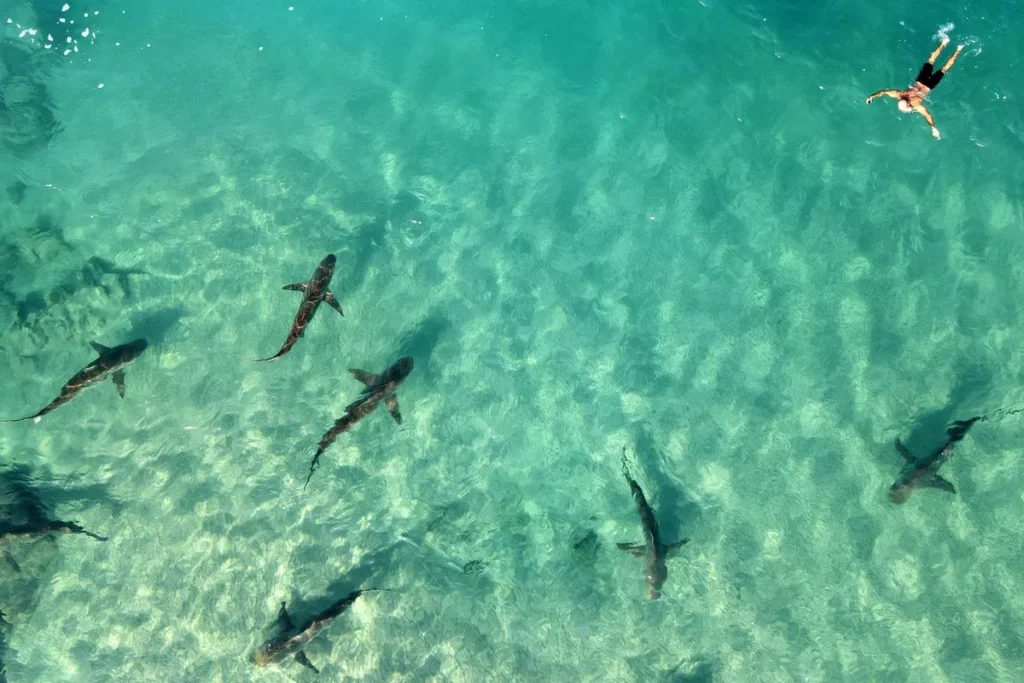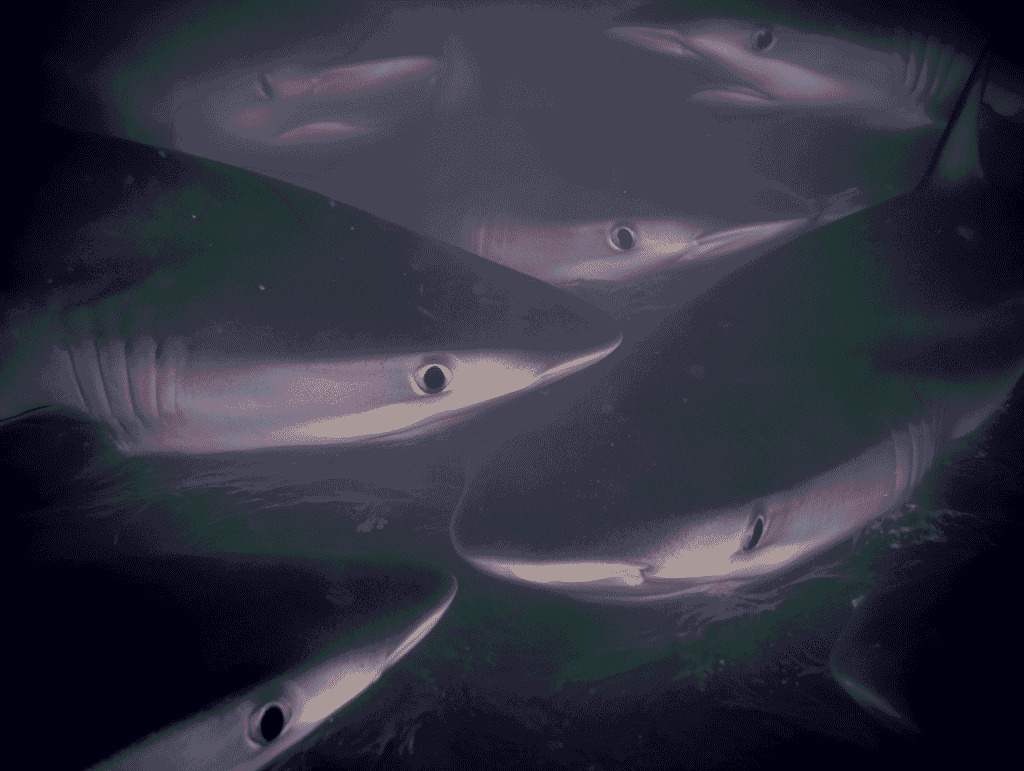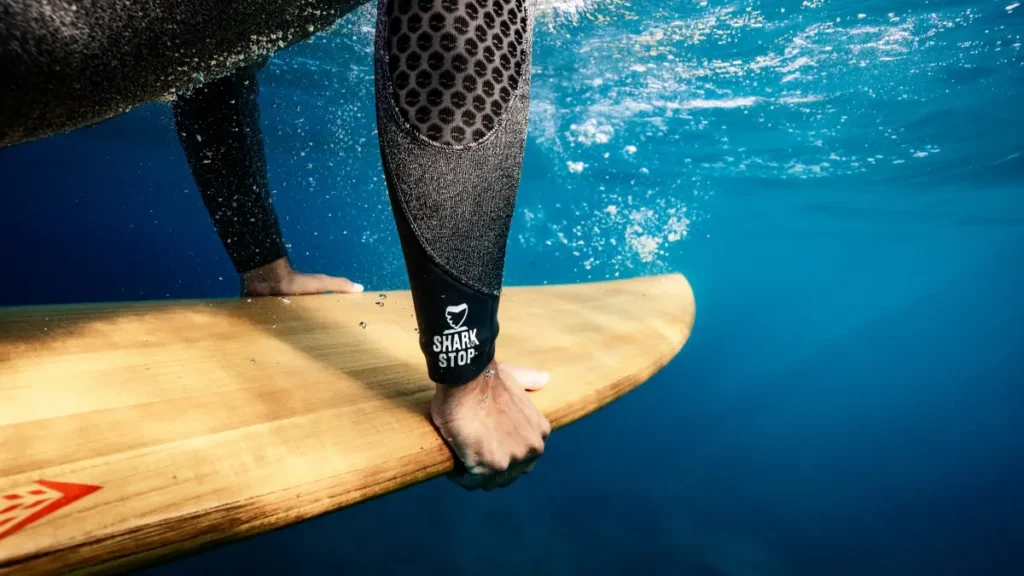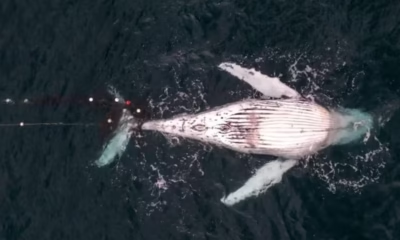science
“Harmless” Sharks Turn Deadly: 1 Rare Feeding Frenzy Off Israel’s Coast Ends in Fatality
A tourist’s snorkel turned into horror as usually-docile Dusky Sharks attacked a swimmer near Hadera — scientists blame human feeding and ecological chaos.

In a chilling incident that has stunned marine experts, a 40-year-old tourist was killed off the coast of Hadera, Israel, after being surrounded by a swarm of Dusky Sharks — a species long thought harmless to humans.
The man had been snorkeling and filming with a GoPro camera just 100 meters from shore when the tragedy struck. Eyewitnesses reported hearing him cry out, “Help… they’re biting me,” moments before disappearing beneath a sea that rapidly turned red.
According to local reports, by the time rescue boats arrived, the water was bloodied and the man had vanished. The next day, small fragments of human remains were recovered, confirming his identity and indicating he was devoured by multiple sharks during the attack.
The case has been detailed in the Ethology journal and is now considered the first recorded fatal attack by a Dusky Shark on a human. Researchers have described the tragedy as a result of a “perfect storm” — combining human error, environmental disruption, and animal instinct.
A Species Misjudged
Despite their formidable size — growing up to 3 meters (10 feet) — Dusky Sharks are generally shy creatures. Historically, they have been recorded as non-aggressive and pose minimal threat to humans.
However, in recent years, the waters off Hadera have become a magnet for these sharks due to warm discharges from desalination plants. This unusual ecological condition has turned the region into a seasonal shark gathering zone, especially during winter months.
Adding to the danger, tourists and local boat operators have reportedly been feeding the sharks to keep them nearby for entertainment and photo opportunities — a practice marine scientists now describe as a grave mistake.

The Birth of “Begging Behaviour”
Because of these feedings, sharks have begun associating humans with food. This has led to what experts call “begging behaviour” — a learned tendency where sharks swim up to divers expecting fish scraps.
Researchers found that many of the sharks near Hadera now approach swimmers directly, sometimes brushing against them, waiting to be fed. This conditioning is thought to have played a major role in transforming their natural caution into curiosity — and eventually aggression.
When the victim extended his GoPro into the water, one shark reportedly lunged toward it, possibly mistaking it for food. That single bite may have triggered blood in the water — which set off a deadly Feeding Frenzy among the surrounding sharks.
Inside the Feeding Frenzy
According to the Ethology report, the attack likely unfolded in two stages:
- A reflex or “clumsy” bite — triggered by food-seeking behaviour.
- Multiple predatory bites — caused by the Feeding Frenzy instinct once blood entered the water.
“The competition for access to the food resource overrides the species’ usual behaviour,” the researchers wrote. “The situation likely occurred via a process of juxtaposition bites — beginning with curiosity, ending in predation.”
In other words, the sharks weren’t hunting humans. They were competing for food in a chaotic, human-influenced ecosystem that blurred the lines between prey and person.

How Human Actions Fueled the Attack
The coast of Hadera has become a strange laboratory of human interaction and marine life.
- Warm industrial water from power stations creates an artificial haven for sharks.
- Food waste and fish scraps dumped by fishing boats act as bait.
- Tourists have grown accustomed to feeding and swimming among them.
Together, these factors altered shark behaviour drastically. Once cautious, the sharks are now confident — even expectant — when humans enter the water.
Experts warn that if this feeding practice continues, similar tragedies are only a matter of time.
The Solution: Stop Feeding, Save Lives
Marine scientists behind the Ethology study say the solution is straightforward: stop the artificial feeding of sharks altogether.
“The central objective is to eliminate the begging behaviour in sharks. This can only be achieved by enforcing a total ban on public feeding,” the researchers concluded.
They suggest that regulation of tourist activities and public education are far more effective than any physical barrier or surveillance system. Ending the learned association between humans and food is the only way to restore natural shark behaviour.
A Global Wake-Up Call
This tragedy isn’t just about Israel or Dusky Sharks. It’s a global reminder that human interference can drastically alter wildlife instincts — sometimes with fatal consequences.
For decades, Dusky Sharks have swum peacefully alongside divers around the world. But this incident shows that even “safe” species can turn deadly when ecological boundaries are crossed.
As the world rethinks its relationship with marine life, scientists urge stricter controls on wildlife tourism — emphasizing respect, distance, and understanding of natural behaviour.
Visit our site for more updates: www.DailyGlobalDiary.com
science
Draconid Meteor Shower Peaks This Week — But the Moon Might Steal the Show
The Draconid meteor shower, born from comet 21P/Giacobini-Zinner, will light up the skies this week — but stargazers may have to fight moonlight to catch the action.

Skywatchers, mark your calendars — one of October’s most fleeting celestial events is here. The Draconid meteor shower is expected to reach its peak this week, offering a brief but dazzling performance for those lucky enough to catch it. However, this year’s show comes with a hitch — a bright post-supermoon sky that could drown out much of the spectacle.
According to EarthSky, the Draconids will peak around 3 p.m. ET on Wednesday, meaning the best time to watch in most regions will be right after sunset. Unlike many other meteor showers that favor the pre-dawn hours, the Draconids make their appearance in the early evening — a quirk that gives night owls and families a chance to enjoy them before midnight.
“The Draconids are a very quick shower,” said Robert Lunsford, fireball report coordinator for the American Meteor Society. “We on Earth pass through debris from comet 21P/Giacobini-Zinner in just a few days, and the main maximum actually only lasts a few hours. So it’s here and gone just like that.”
Why the Draconids Are So Special
The Draconid meteor shower is named after the constellation Draco, the dragon, from which its meteors appear to radiate. As Lunsford explains, “They’ll be shooting from the head of Draco, which lies high in the northern sky after sunset before circling down toward the northwestern horizon as the night progresses.”

While it’s typically a mild event — often producing only one or two visible meteors per hour — the Draconids are infamous for their unpredictability. They’ve occasionally erupted into full-blown meteor storms, with thousands of shooting stars lighting up the night sky.
The most famous Draconid storm occurred in 1933, when observers in Europe reported seeing over 1,000 meteors per hour, and another strong outburst came in 1946. More recently, smaller storms have been recorded in the 1990s and early 2000s, peaking at around 400 meteors an hour.
“It’s one of those showers that can surprise you,” Lunsford added. “Most years it’s quiet — and then suddenly, it’s spectacular.”
Moonlight Trouble: What to Expect This Year
This year’s viewing conditions aren’t ideal. The Draconid peak comes just days after October’s supermoon, which means the night sky will still be brightly illuminated. That glare could wash out many of the fainter meteors, leaving only the brightest ones visible.
Still, for dedicated skywatchers, patience might pay off. Experts suggest heading to a dark, open area away from city lights and looking toward the northern sky right after dusk.
“If you’re looking toward the north and see a slow-moving meteor overhead, chances are it’s a Draconid,” Lunsford said. “But even on moonless nights, you might only see one per hour at the peak. With the moonlight this year, it could be even fewer.”
A Preview of What’s Next: The Orionids
If the Draconids disappoint this week, don’t pack up your stargazing gear just yet. The Orionid meteor shower — which peaks later this month — promises a more rewarding experience. The Orionids, originating from debris left by Halley’s Comet, typically produce 10 to 20 meteors per hour, and this year’s peak conveniently aligns with a new moon, ensuring darker skies for optimal viewing.
“The Orionids are a more reliable show,” said Lunsford. “They’re fast, bright, and this year’s new moon means near-perfect conditions.”

Why Meteor Showers Matter
Beyond their beauty, meteor showers like the Draconids are reminders of Earth’s ongoing journey through space. Each streak of light is a tiny fragment of a comet burning up in our atmosphere — a cosmic connection stretching across millennia.
As the Earth crosses paths with the 21P/Giacobini-Zinner comet’s orbit, the debris it left behind becomes the Draconids — a celestial signature of the universe’s ongoing motion.
So, while this year’s show might be dimmed by the moon’s glow, it’s still worth stepping outside and looking up. Because even one meteor flashing across the sky can remind us just how vast, and yet connected, our place in the cosmos truly is.
For more Update http://www.dailyglobaldiary.com
Entertainment
Can Bite-Resistant Wetsuits Really Save Surfers? 5 Key Findings from Australian Shark Study
Researchers from Flinders University reveal how Kevlar-based wetsuits may reduce shark bite severity, but not risk entirely.

The fear of sharks is as old as surfing itself. From Sydney to California, surfers often enter the water knowing they share it with apex predators like the Great White Shark and Tiger Shark. Now, an innovative Australian study suggests that “bite-resistant” wetsuits could give ocean lovers an extra layer of protection.
According to new research led by the Southern Shark Ecology Group at Flinders University, in collaboration with the New South Wales Department of Primary Industries, modern wetsuits woven with materials like Kevlar and high-strength sailing rope fibers can significantly reduce the severity of shark bite injuries. The findings, published in Wildlife Research, don’t promise invincibility, but they do show that such suits may be life-saving.
Why Bite-Resistant Wetsuits Matter
Shark bites are rare, but when they happen, the consequences can be devastating. In the last decade, the Australian Shark Incident Database recorded an average of 20 injuries and almost 3 fatalities annually. The majority of deaths occur due to catastrophic blood loss, with bites often severing major arteries.
The tragic death of surfer Mercury Psillakis near Dee Why beach in Sydney earlier this year highlighted the risks once again. Even one attack can shake coastal communities and raise urgent questions about safety.

Prof Charlie Huveneers, who co-authored the study, explained:
“Bite-resistant materials can reduce blood loss and trauma from major lacerations and punctures, potentially saving lives.”
The Science Behind the Study
Researchers didn’t test these suits in laboratories alone—they took them into the wild. In South Australia’s Spencer Gulf, great white sharks were attracted using bait. Off Norfolk Island, Queensland, tiger sharks were involved. Once a shark was engaged, the bait was replaced with a “bite package”—a foam board wrapped in wetsuit materials designed to mimic the density of human flesh.
In total, the team recorded 84 white shark bites and 68 tiger shark bites. Each was measured and categorized into levels of severity: superficial, slight, substantial, or critical.
The Four Wetsuits Tested
The materials tested included both existing commercial options and experimental fabrics:
- Aqua Armour
- Shark Stop
- ActionTX-S
- Brewster
All four showed improvements over traditional neoprene. While crushing injuries from jaw pressure are still possible, the suits significantly reduced the number of critical and substantial wounds—those most associated with heavy blood loss and long-term disability.
How Do These Materials Work?
Dr Tom Clarke, another researcher from Flinders University, explained that shark teeth—with their serrated, razor-sharp edges—usually puncture and tear through regular wetsuit fabric instantly. But Kevlar-based fibers resist that piercing motion.
“The material itself stops the tooth from puncturing through. Crushing injuries may remain, but the risk of deep lacerations is reduced,” Clarke said.
Essentially, these fabrics absorb and spread the force, blunting the damage that sharp teeth would normally inflict.

Personal Protection vs. Area Management
Governments traditionally manage shark encounters using broader strategies such as shark nets, Smart drumlines, and drone surveillance. But these come with drawbacks—nets often entangle dolphins and turtles, while lethal measures raise conservation concerns.
The study suggests that personal safety gear, including bite-resistant wetsuits and electronic deterrents like shark shields, could complement these strategies.
Dr Brianna Le Busque, a conservation psychologist at the University of South Australia, noted that such tools may also ease public fear:
“Fear of sharks is strongly tied to a lack of control. Giving surfers evidence-based tools restores some empowerment and reduces anxiety.”
Not a Silver Bullet
Researchers caution against seeing these suits as shark-proof armor. Severe internal injuries from a powerful bite remain possible, and no suit eliminates risk. Still, when compared with ordinary neoprene, the reduction in critical damage is a meaningful step forward.
For many surfers, divers, and swimmers, even a small margin of extra protection could be the difference between survival and tragedy.
Final Word
The idea of “shark-proof suits” has long been a fantasy, but Australia’s research brings it closer to reality. Bite-resistant wetsuits may not stop every injury, but they offer a promising addition to the safety toolkit for those who call the ocean their second home.
As Prof Huveneers put it: “They won’t remove the risk of sharks, but they may well save lives.”
For the latest on technology, conservation, and ocean safety, visit Daily Global Diary.
-

 Entertainment6 days ago
Entertainment6 days agoRobert De Niro slams ‘King Donald I’ and calls Americans to rise again — says ‘we can’t let up’ against Trump’s bullying tactics
-

 Entertainment3 days ago
Entertainment3 days agoFans Can’t Believe Susan Boyle’s Stunning New Look… “She’s Unrecognizable!”
-

 Politics5 days ago
Politics5 days agoWhy Donald Trump Suddenly Ended All Trade Talks With Canada — And the Unexpected Role of Ronald Reagan
-

 Sports1 week ago
Sports1 week ago“Chasing more than a conference crown… Purdue Boilermakers set sights on national glory after historic preseason No. 1 nod”
-

 Sports1 week ago
Sports1 week agoHistory made! Purdue Boilermakers grab first-ever No. 1 spot in USA TODAY Sports preseason men’s basketball poll — can they finally win it all?
-

 Politics5 days ago
Politics5 days agoCharlotte Train Horror: Why a Ukrainian Refugee’s Killing Has Sparked a Death Penalty Case That’s Shaking America
-

 Entertainment6 days ago
Entertainment6 days agoDonald Trump fumes as Bad Bunny becomes first-ever Spanish-only Super Bowl headliner — NFL says decision was ‘carefully thought through’
-

 Politics1 week ago
Politics1 week agoPoll shocker: Donald Trump’s approval rating climbs as Americans surprisingly back a Palestinian state




























